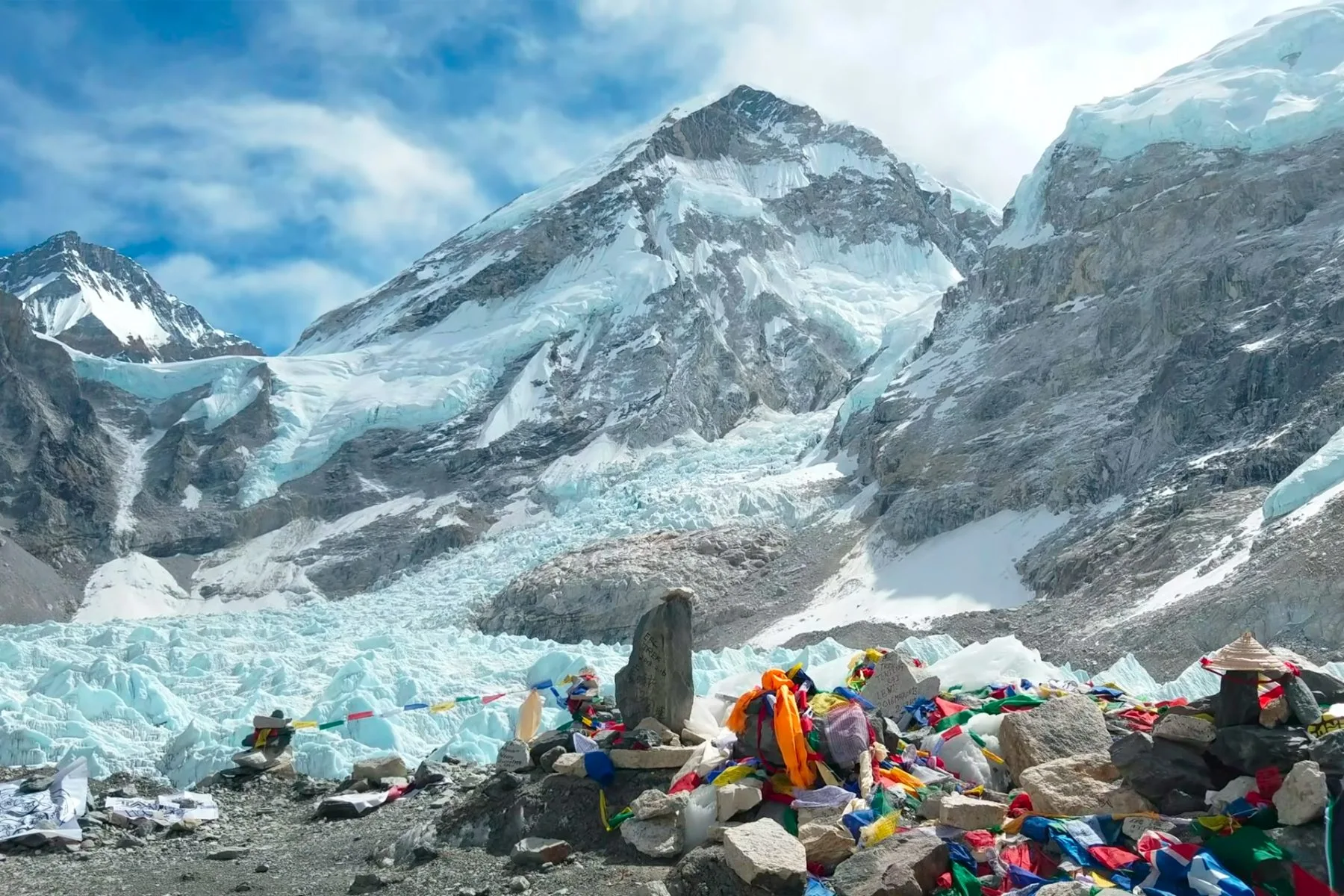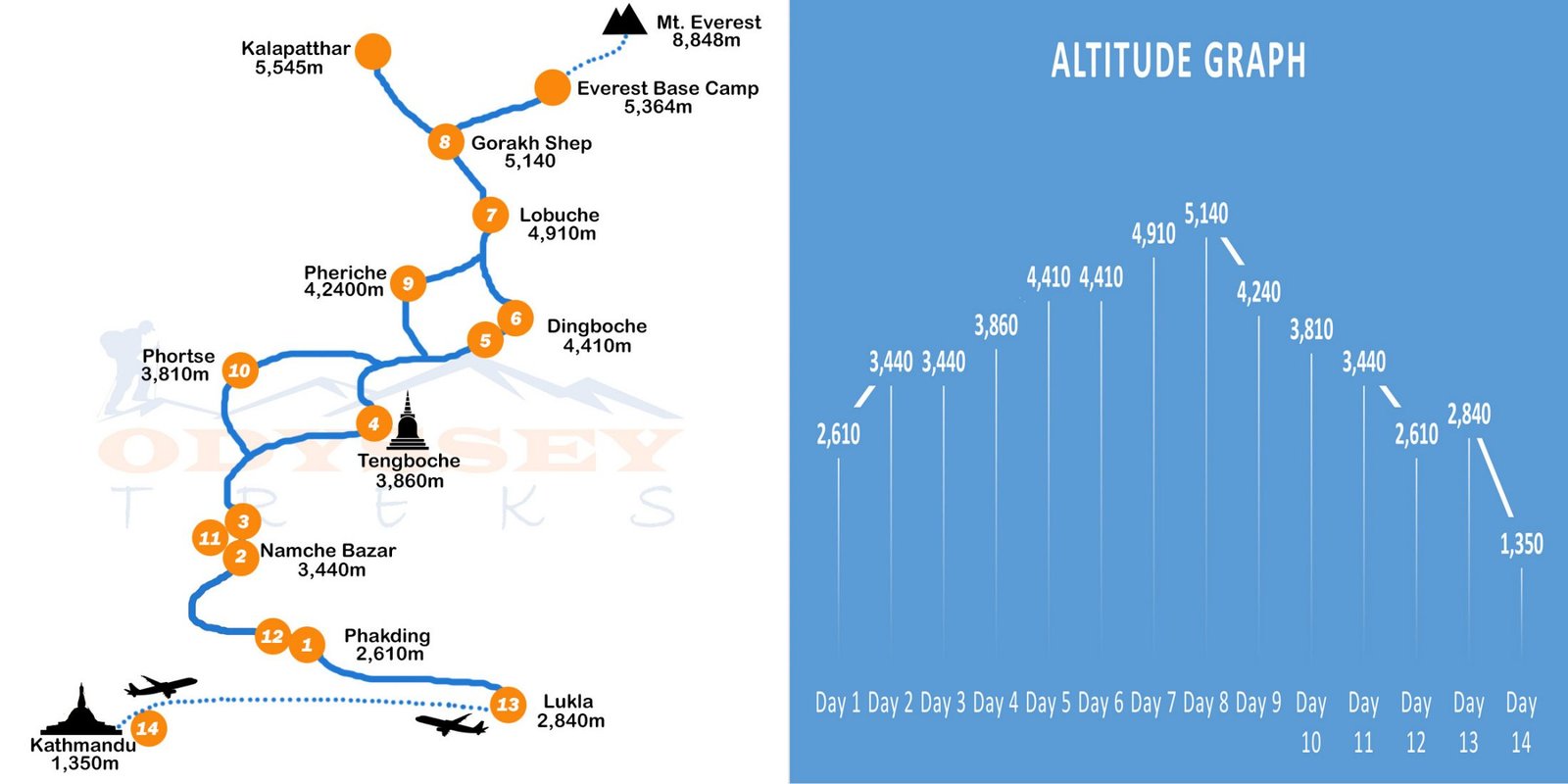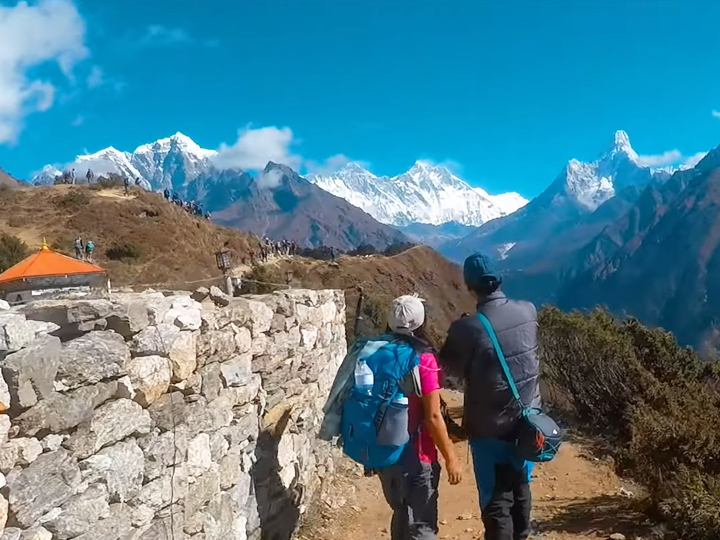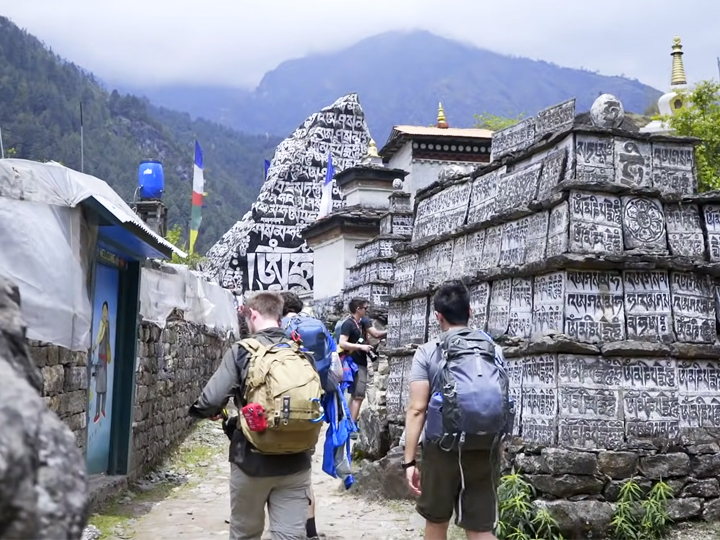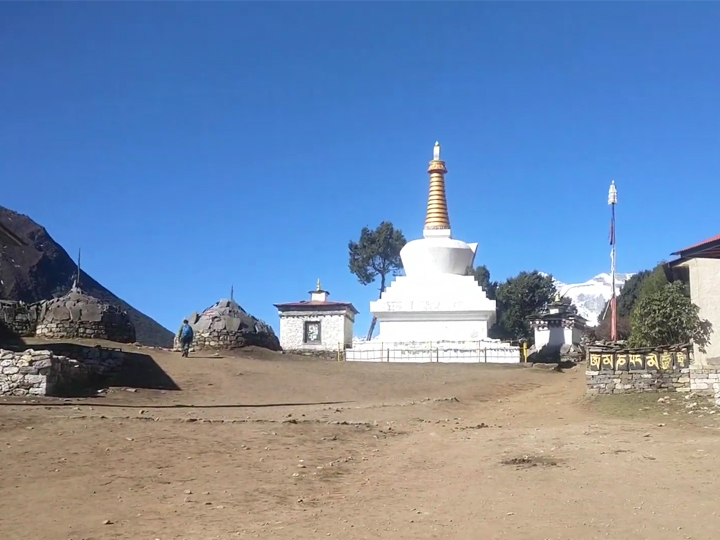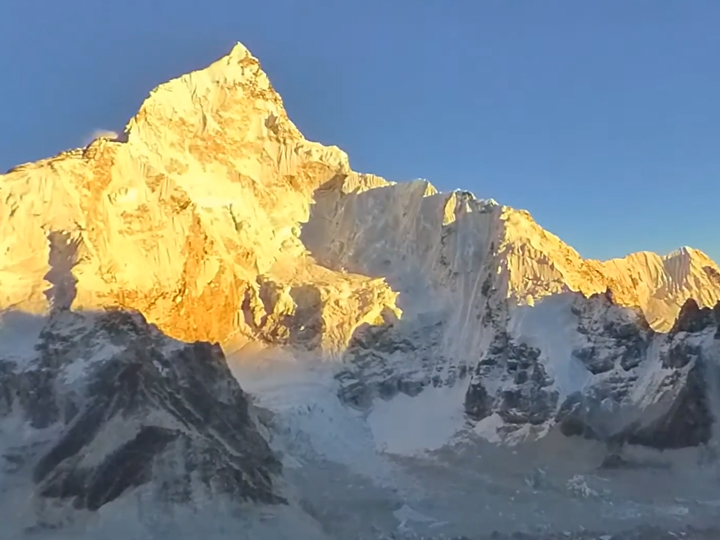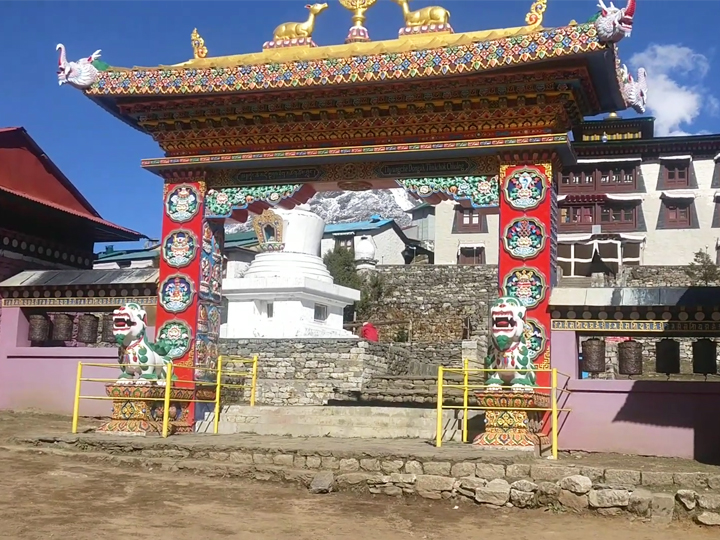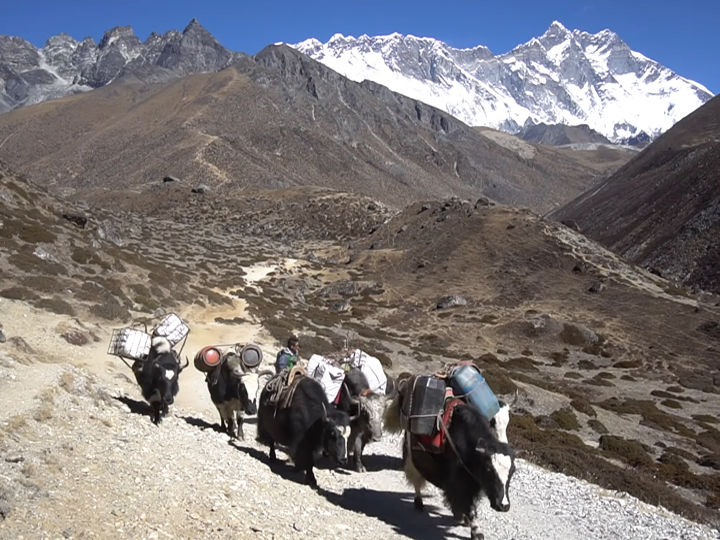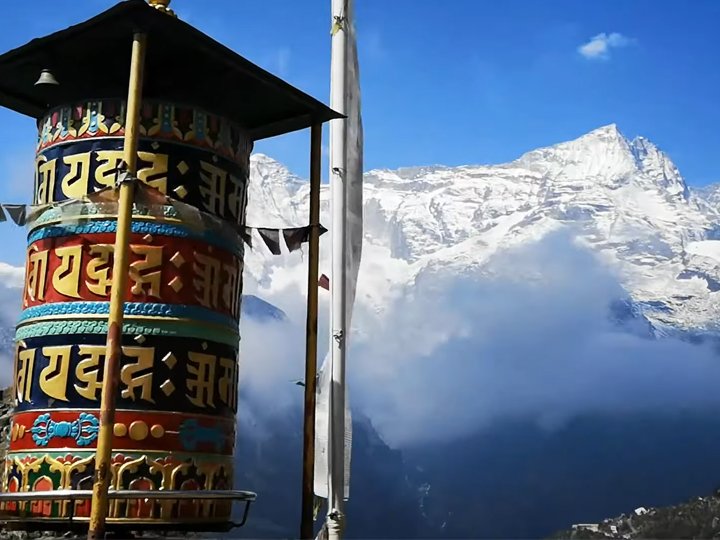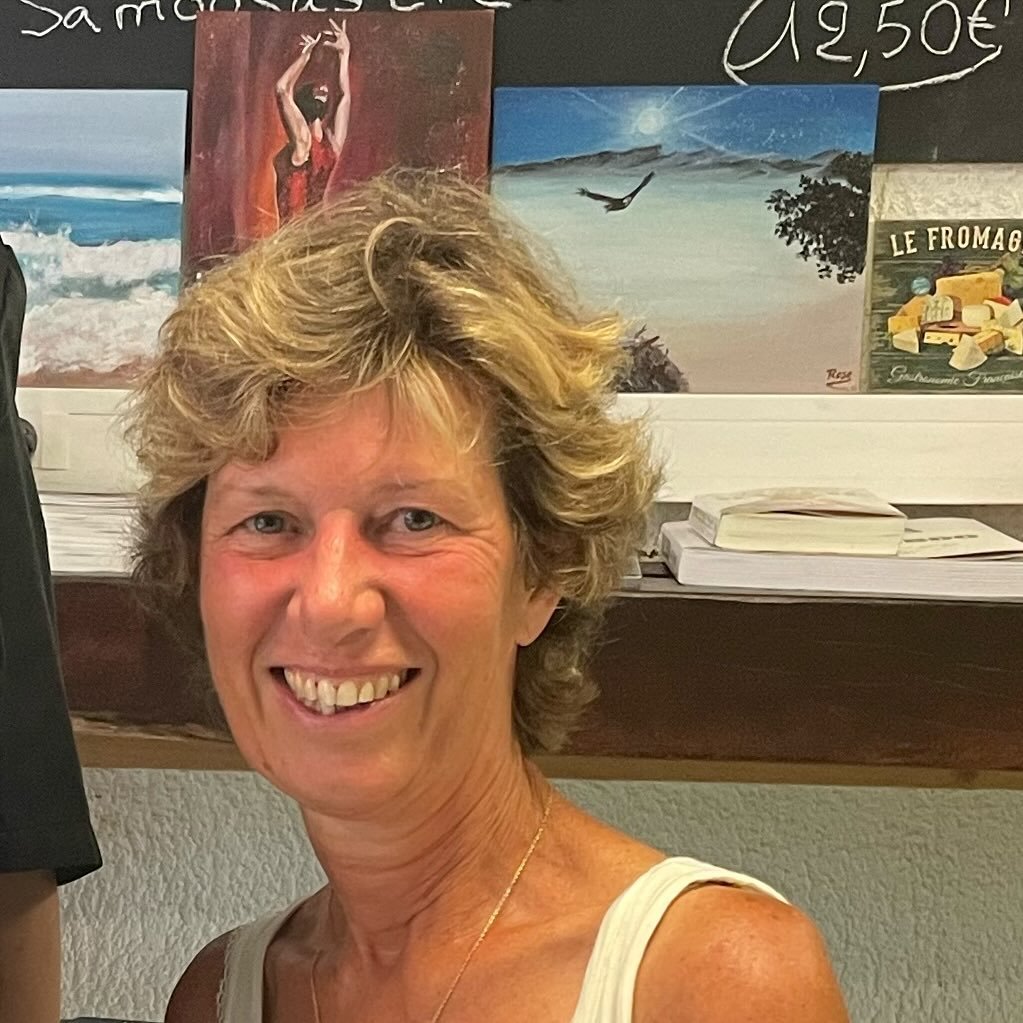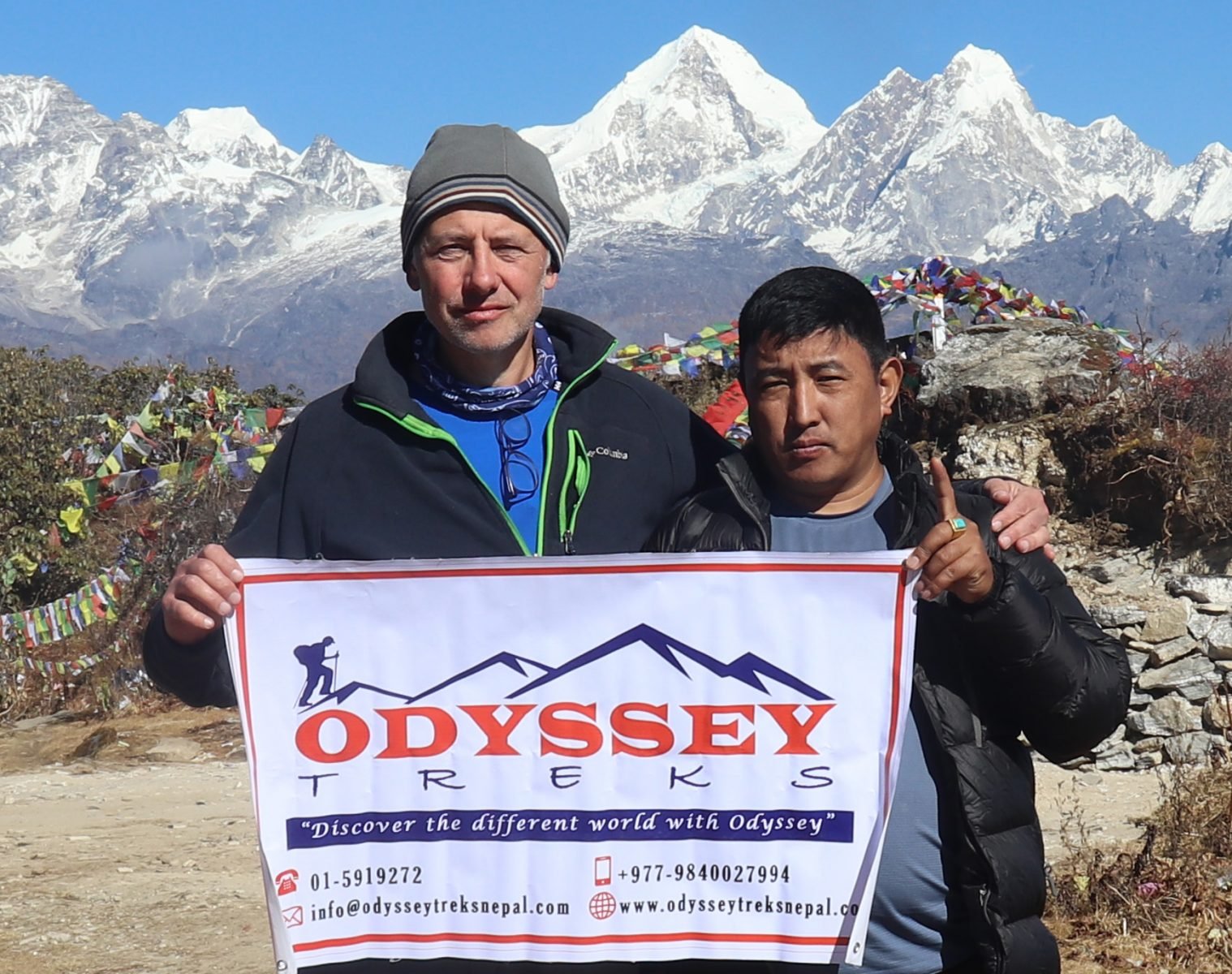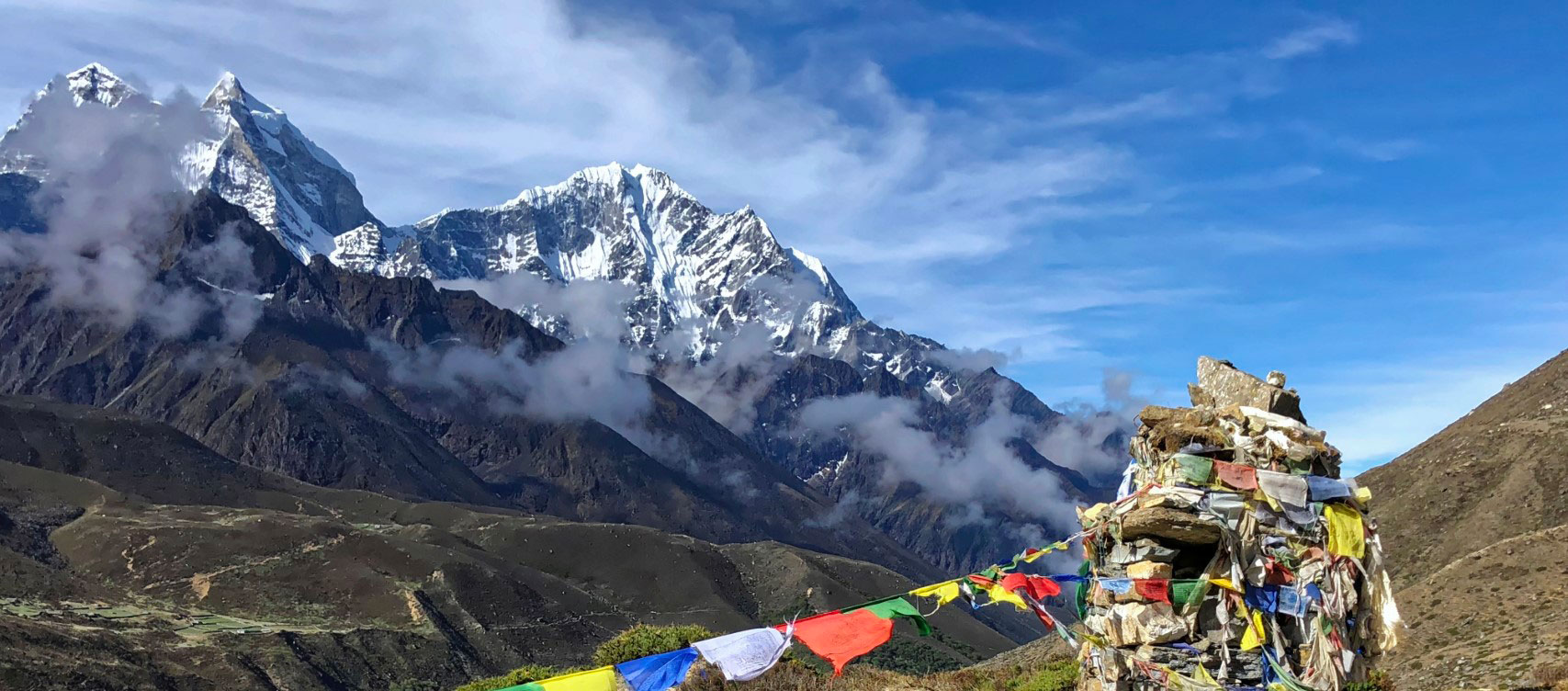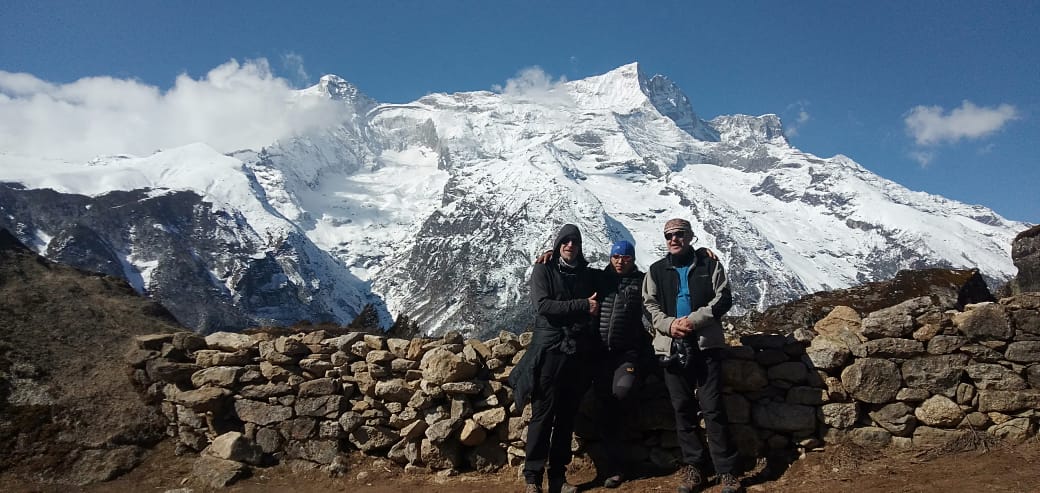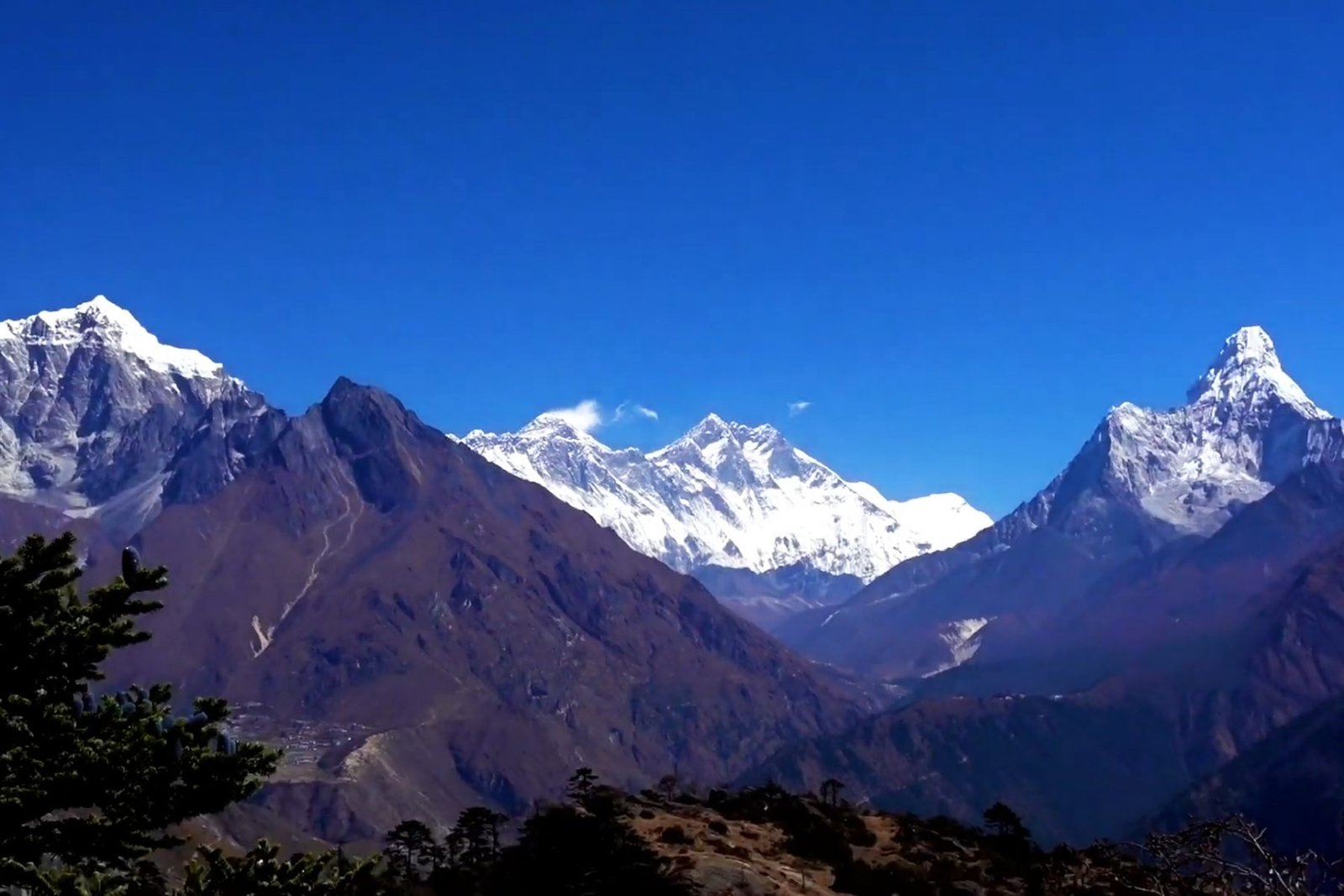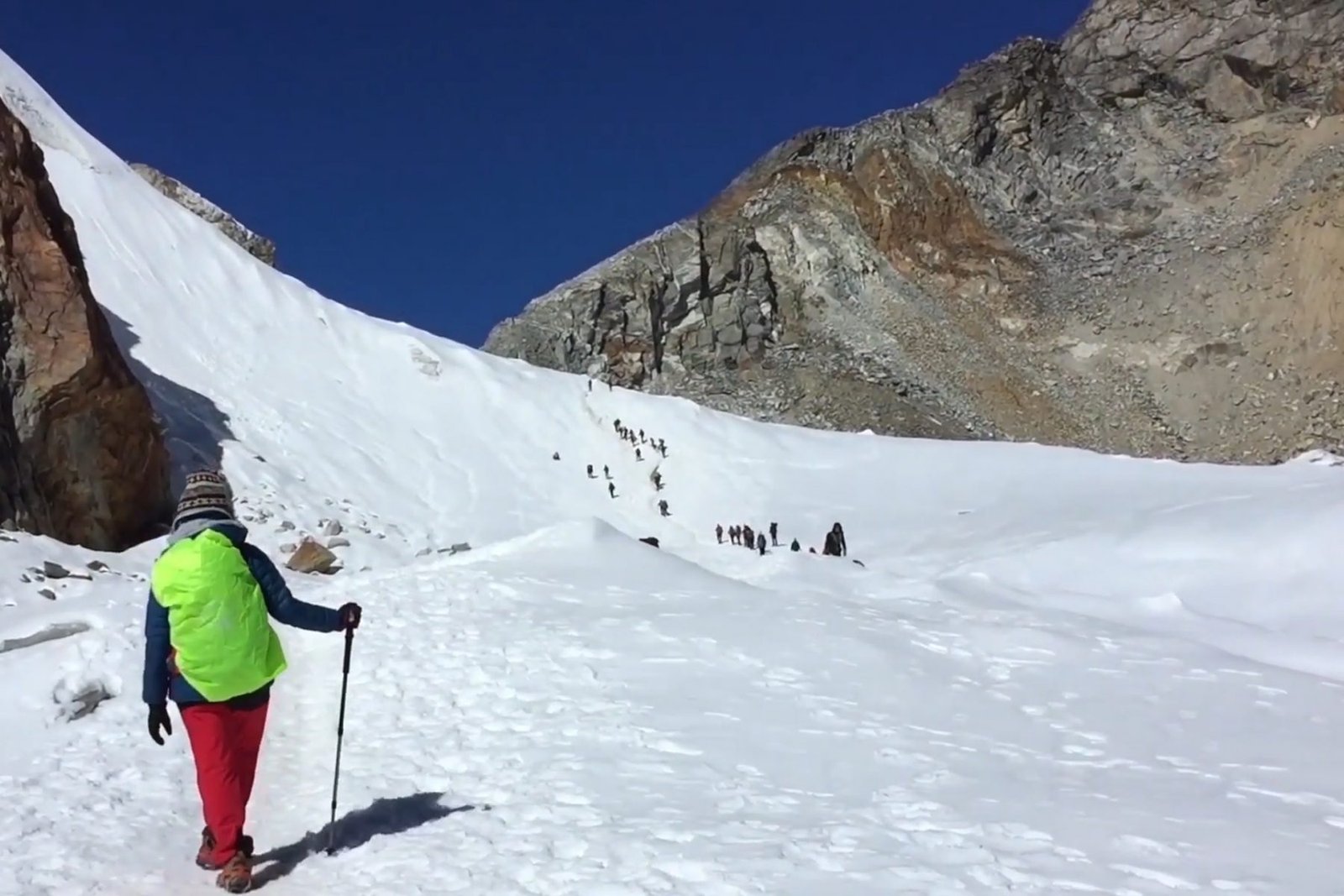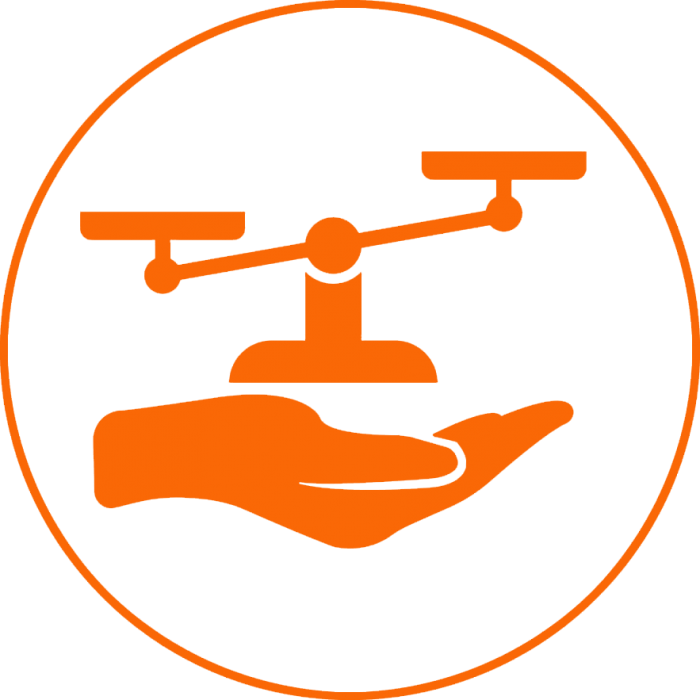Trip Overview
Introduction to Everest Base Camp Trek
Everest Base Camp Trek is a renowned trekking destination in the world for trekkers. Mount Everest (8,848 meters), at the top of the world, attracts trekkers with its awe-inspiring attractions.
The Everest Base Camp Trek is not only popular for visiting the top of the world but also the Khumbu Himalayan Glaciers, Khumbu Icefall, beautiful landscape, Tibetan Sherpa culture, ancient Tibetan monasteries, wild animals, and green forest.
Everest Base Camp Hiking is one of the top three hiking destinations in the world with extremely Himalayan scenery, so annually, thousands of trekkers make this trip to Nepal for two weeks of trekking holidays.
You can also visit Everest High Passes trek in just 19 Days; packages, Cost, Cheap price, Itinerary,
This trek allows you to see many stunning Himalayan peaks from a low altitude in a short period of time. You can have magnificent views of the mountains, which are above 8,000 meters: Mount Everest (8,848 m), Mount Lhotse (8516 m), Mount Makalu (8,481 m), and Cho-ou (8,201 m). As you trek Mt. Everest, you will have a lifetime adventure.
Miles away from the busy lifestyle, cars, conveniences, and daily luxuries, you will satisfy your spirit with natural beauty and expand your patience beyond your potential. Mount Everest Base Camp Trekking is designed for trekkers who want to spend the day on the world’s tallest mountain.
The entire trek is covered for around 14 days and is designed for those trekkers who have good health and general hiking experience and who can walk up to 6-7 hours per day without any difficulty.
Monasteries, Sherpa’s lifestyle, Culture, Nature
Visit the monasteries with flag prayers along the way, which will lift your spirituality. Interacting with locals gives you information about individuals, their culture, and their lifestyle. The Himalayan people have a charming life, and their warm hospitality can make you feel at home. You will be surrounded by beautiful fields, breathtaking landscapes, stunning waterfalls, and pine and rhododendron forests that lead you along this route.
The trek begins via trails that take you to the ethnic Sherpa villages and the base camp. Throughout the journey, the beautiful Himalayas will not leave your sight. Scenic hills enhance the beauty of the horizon and create ethereal beauty. Experience the remote Himalayan lifestyle of the locals, away from modernization.
Everest Trek Starts
You start your Everest Base Camp Trek with a short, adventurous flight to Lukla. Climate change is felt immediately when you land at the top of the world, Lukla Airport. Lukla is in the Khumbu region, where Mount Everest is located. Lukla is the starting point of the trek and also the endpoint.
After landing at Lukla Airport, your trip starts at Phakding Village. The trail takes you through traditional Sherpa villages, incredible landscapes, green forests, and many suspension bridges to Phakding.
Namche Bazaar (main commercial market)
The next day, you will start your trek to Namche Bazaar after lunch. This day trip will make you more excited, as Namche Bazaar is the main commercial market in the Khumbu area. As you walk along the path, you will find yourself surrounded by mountain peaks higher than 6,000 meters. As you walk through the area, you will see thousands of prayer flags and huge prayer wheels.
You will also cross the incredible Hillary Suspension Bridge with prayer flags. You can visit the Sherpa Museum in Namche, where you will see art galleries and glimpses of Sherpa’s history. Another day, you will stay in Namche again and enjoy the view of Namche Bazaar and the surrounding mountains.
On the fourth day of the trip, you will continue the journey from Namche to Tengboche. The main attraction of this place is the famous Tengboche Monastery, which is located at an altitude of 3,860 m. This monastery is perfectly suited for meditation and prayer.
The next morning, you will continue your journey to Dingboche, from where the entire Himalayan mountain range of the Khumbu region can be seen. After spending one more day in Dingboche, your next destination will be Lobuche. To reach Lobuche, you will walk along the Khumbu Glacier.
Towards Everest Base Camp
The next day will be a great day for you, as the day’s walk will take you to Everest’s base camp. After enjoying the magnificent view of the world’s highest peak for some time, you will return to Gorakshep by the same route.
The next morning hike will take you to Kalapatthar, from where you can see the amazing views of the sunrise on Mt. Everest and other peaks. After spending some time in Kalapatthar, you will return to Pheriche village.
You will reach Lukla again by walking to the same villages, Namche and Phakding. You will reach Phortse the next day. After that, you will reach Lukla by walking again to the same villages, Namche and Phakding. On the morning of the last day of the trip, you will fly from Lukla to Kathmandu.
This trip is a little bit hard, so you need good physical fitness and prior trekking experience. Spring and autumn seasons are good for a trek in Everest Base Camp, but we arrange the trek according to your wishes and holiday schedule. Hopefully, your journey with nature will be one of the most memorable moments of your life.
You May Like 10 Best Things Every Traveler Should Do in Nepal
The attraction of Everest Base Camp Trek
- An exciting morning flight from Kathmandu to Lukla Airport at an altitude of 2,846 meters.
- Trek to the base camp of the world’s highest peak, Mount Everest.
- Magnificent views of Mount Everest, Khumbu Glacier, and Khumbu Icefall.
- An opportunity to experience the unchanged age-old culture, traditions, and lifestyle of the Sherpa people
- A visit to Namche Bazaar, a main business center in the Khumbu region
- Walking through the dense forest of rhododendron trees and lush vegetation
- Beautiful view of sunrise from Kalapathar
- A visit to Tengboche Monastery, the largest Buddhist monastery in the Everest region
- A visit to the world-famous Sagarmatha National Park, which is on the UNESCO World Heritage Site List.
Food and accommodation in Everest Base Camp Trekking
During the Everest Base Camp Trek, you will find teahouses run by the locals. Teahouses are small lodges that provide food and accommodation for hikers. These are simple rooms with beds, mattresses, and blankets, but extra blankets are available when it is cold, or you can use your sleeping bag.
During the trek, Nepali food, as well as continental food, is available in these teahouses. Depending on the location, some teahouses offer rooms with attached bathrooms, while others have fewer amenities. Hot water for bathing is available in almost all places, but if not, hot water is available at your request.
Everest Base Camp Trek Cost
Trekking costs depend on route, travel agency, service, and many other factors. To determine the cost, trekkers have to decide what kind of service they want to take. You can complete this trek for USD 1350 if you use basic facilities.
The difficulty of Everest Base Camp
How difficult or easy any trekking is depends also on the season. Everest Base Camp trekking is suitable in the spring and autumn seasons and is also somewhat easier. This trek is somewhat challenging and passes through high altitudes. Everyone can complete it with good preparation and a bit of self-determination.
This trek does not require any hard-core technical skills, but you should be able to walk for long hours as this trip involves a lot of up-and-down climbs. What makes this trip difficult is its altitude, which can sometimes lead to altitude mountain sickness. Therefore, it is important to acclimatize your body properly before making another attempt at an altitude. This trek is moderate to strenuous, so you need good physical fitness to complete the trek.
Best Seasons for Everest Base Camp
Autumn and spring are the best times for the Everest Base Camp Trek. There is not much rain during these seasons, and it is also not very cold, which makes it easier for the trekkers to complete the trek. But you can do trekking according to your vacation throughout the year as per your wish.
What about security during the Everest Trek?
There is no doubt that the Everest Base Camp Trek in Nepal is safe for trekkers. The safety of our customers is the most important thing to us. All of our guides and other support teams have been carefully selected for your trip. Guides are licensed by the government of Nepal, and porters are trained.
Our guides and porters will protect you and your belongings. But during the trip, we advise you to take care of your personal belongings as well. Take your personal belongings with you to your room in a tea house, and lock your room when you need them. During the camping trek, take your personal belongings inside the tent. our guides and porters will also protect you and your belongings.
You may also like to see Everest View Trekking in just 8 days.
Altitude Sickness and Acclimatization during Everest Base Camp Trek
Altitude sickness is the most important thing to keep in mind while trekking in high mountains. If you ignore altitude sickness, it can cause serious problems. Altitude sickness is a common problem when traveling to high mountains, but don’t panic; you can avoid it by taking some precautions.
Acclimatization days are necessary for some places to avoid this altitude sickness problem. You do not need acclimatization days when returning from base camp, but you do need acclimatization days while going to base camp.
If you fail to acclimate well to lower altitudes, you will struggle at higher altitudes. So, it is necessary to have acclimatization days in your Everest Base Camp Trek schedule. Generally, if you go above 2,500 meters, you are at risk of altitude sickness, and some symptoms may appear. At altitudes above 3,500 meters, there is less oxygen, so your body needs more time to adjust. To achieve an altitude of more than 5,000 meters, you need to pay more attention.
The more time you spend at the critical points before you gain altitude, the better you will feel. We include acclimatization in our itineraries to help prevent altitude sickness. Our itinerary includes acclimatization at Namche and Dingboche during the Everest Base Camp Trek.
Also, we allow time for the slow ascent to prevent altitude sickness. But you don’t have to worry too much about altitude sickness, as our team will take care of your health and suggest ways to take precautions.
Purified water, Toilet, Shower, and Mobile Battery During Trek
If you are thinking of EBC Trek for the first time, then toilet facilities, water, showers, battery charging, etc., are your concerns. But you don’t have to worry about these things because they are all available on the trekking route. Pure-boiled drinking water is available in almost every village. Mineral-bottled water for drinking is also available in all teahouses.
Shower
There is cold water for the shower, but it is difficult to take a cold shower as it gets colder in this area. So, you need hot water for the shower, but you have to pay extra for that. Here, you can use a gas geyser or hot bucket of water for a shower, and it costs 4–5 dollars per head.
Battery Charging
Among your personal belongings during trekking, your mobile and camera are the most used items, which need to be charged from time to time. When it comes to camera and mobile batteries, it is a good idea to carry some extra batteries. If not, don’t worry; almost every teahouse has a facility to charge mobile or camera batteries. But you have to pay about 3-5 dollars extra per battery charge.
Toilets
Another concern you may have is about the toilets available on the trekking trail. But don’t worry; toilets are available everywhere along the Everest Base Camp Trek trail. The toilets available in teahouses are simple toilets. So, don’t expect all the bathroom facilities you have at home.
A simple toilet is a squat toilet and is usually available outside the room. In such simple toilets, all the accessories required for the toilet are not available. So, it is better to carry essential toiletries like toilet paper, hand washing liquid, wipes, sanitizer, soap, a small dry towel, etc.
But in nice and luxurious hotels and lodges, you can get rooms with an attached toilet. At altitudes below 4000 meters, you may find western commodes, but above 4000 meters, most guesthouses have squat toilets.
Permit For Everest Base Camp Trek
While trekking Everest, you may be concerned about the required permit and the fee to be paid for it. Yes, trekking in Nepal’s Himalayan region and higher national parks requires a permit. But permits may also vary by region and specific trip. Trekking in a restricted area requires a special permit, but since Everest Base Camp Trek is not a restricted area, it does not need a special permit.
TIMS (Trekkers Information Management System) was required in the field before 2018 but is not required now. Instead of TIMS, the Khumbu Pasang Lhamu rural municipality entry permit is currently implemented. Since this permit is not available in Kathmandu, it must be obtained in Lukla. This permit is implemented by the local government of Khumbu, which collects two thousand rupees from each foreigner.
Along with this, another permit you need is the Everest National Park Entry Permit. You have to pay Rs 3000 per person for this permit, and you can get it from the Tourism Board office in Kathmandu. But for your convenience, you can also get it at the entrance of Everest National Park. But we are responsible for all these permits, so our guide will arrange all the necessary permits for you.
Weight to be carried on Everest Trekking
While trekking, you have to carry the necessary clothes and equipment, which is a bit heavy. You carry some of your items like warm clothes, water, snacks, sunblock, a camera, towel, soap, toothbrush, etc. But apart from those, you need porters to carry other heavy items on the Everest Base Camp Trek.
On short and easy treks, you may not need porters, but on long and tough treks, you will need porters. Porters carry a maximum weight of 20 kg. While trekking in Nepal, porters are allowed to carry a maximum weight of 20 kg. If your luggage weighs more, you can hire extra porters. 1 porter is provided for 2 people, and you can share that porter with two people.
What happens if there is an emergency during the trek?
It is better to be aware in advance of any emergency that may arise during trekking. You can do the Everest Base Camp Trek alone without a trekking agency, porter, or guide. But if you trek through a local trekking agency, you will find it easier in various situations.
If you are not well or have any simple problems, our team will take care of you. A common problem at high altitudes is altitude sickness, for which your guide will take good care of you. But if you have an emergency during the Everest Base Camp Trek, the guide will call us immediately, and we will arrange the helicopter.
According to the information from the guide, the helicopter will take you to the hospital in Kathmandu. Our company representative will take care of you at Kathmandu Hospital as well. You will have to pay for hospital, helicopter, and other expenses in case of emergency.
Also, Visit: Everest Base Camp for a Short Trek in just 12 Days, Itinerary, Cost, and Package.
Trip Itinerary
Fly Kathmandu to Lukla (2,840 m) and start trek to Phakding (2,610 m) - 4 to 5 hours walk. (Distance)
On the first day of the trip, you will go to the airport from the hotel for the Lukla flight. After 45 minutes of exciting and spectacular flight, you will land at Lukla’s Tenzing Hillary Airport at an altitude of 2846 meters. Now you will start walking from Lukla to Phakding and it will take 4 to 5 hours to reach. From Lukla, you will cross Chaurikharka village and Dudhkoshi Ghat and walk till you reach Phakding. You will spend the night in a lodge in Phakding
Phakding to Namche Bazaar (3,440 m) - 6 to 7 hours walk.
After breakfast on the second day of the trip, you will proceed to Namche. The journey will continue along the north bank of the Dudhkoshi River, enjoying the scenic view. On the way to Namche Bazaar, you will cross the Hillary Suspension Bridge and many other suspension bridges. The trip will be even more exciting as you cross the suspension bridges with a view of the beautiful mountains. On the way, there is the Everest National Park check post where you have to register the permits. After a 6 to 7- hour walk, you will finally reach Namche Bazaar where you will spend the night.
Free day at Namche Bazaar.
You will spend this day in Namche bazar. On this free day, you can enjoy Namche Bazaar. Namche Bazaar is the largest, most famous, and main commercial market in the Khumbu region. You can spend your day exploring Namche Bazaar. Here you will find many hotels, restaurants, and shops. There are Sherpa Museums, Hillary School, Sherpa Settlements, Sangboche Airport, and Yak Farms to visit. If you are eager to see a glimpse of Mt. Everest from afar, you should not miss the hike to Everest View Hotel, from where you can see the panoramic views of Mt. Everest.
Namche Bazaar to Tyangboche (3,860 m) - 5 to 6 hours walk.
On the fourth day of the Trip, after a hot breakfast in the morning, you will head to Tengboche. The trail is full of ups and downs. It is an easy trek from Namche to Phunki then you will have an ideal ascend to reach Tengboche village. The trail through the jungle is a bit challenging but the views you get to enjoy are really rewarding. The main attraction of this place is the famous Tengboche Monastery at an altitude of 3,860 meters. It is the largest monastery in the Everest region and is known for its world-class Tengboche monastery. This monastery is suitable for meditation and prayer.
Tyangboche to Dingboche (4,410 m) - 5 to 6 hours walk.
After breakfast on the fifth day of the trip, you head to Dingboche. The journey from Tengboche to Dingboche takes approx. 5 to 6 hours. On the way, you will see many beautiful chortens, mani walls, and monasteries. You will walk downhill to Debuche and cross the Imja River to reach Pangboche. You can also visit the beautiful Pangboche Monastery in Pangboche. You will cross the village of Pangboche from where you can enjoy the breathtaking view of Mt. Everest, Mt. Lhotse, and, Mt. Ama Dablam. You will spend the night in a hotel in Dingboche.
Rest day at Dingboche.
On this day you are free in Dingboche for acclimatization. By reaching Dingboche, you will gain enough height so your body needs time to adjust to thin air and high altitude. To keep yourself busy on this day you can visit Dingboche Monastery and walk to Nangkhartsang Peak. Apart from this, the panoramic view of Mount Everest, Ama Dablam, Lhotse, Nuptse, Cho Oyu, etc. can be seen in the distance.
Dingboche to Lobuche (4,910 m) - 5 to 6 hours walk.
On the 7th day of the journey, after breakfast, you will walk to Lobuche. It takes about 5 to 6 hours to reach Lobuche The trail leads to a short uphill near the ridge above the Pheriche village. After a while, the trek takes you to the Thukla Hills and you find yourself walking along the Khumbu Glacier. You will spend the night in a hotel in Lobuche.
Lobuche to Everest Base Camp (5,364 m) and back to Gorakshep (5,140 m) - 8 to 9 hours walk.
After breakfast, you will be ready for a big and extraordinary day. This day trip will take you to your main destination Sagarmatha base camp. This day’s walk will also be the longest walk of your trip. It takes about 8 to 9 hours to reach the base camp and return to Gorakshep. Gorak Shep is a beautiful village surrounded by snow-capped mountains where you will drop off your luggage and head to base camp. When you reach the base camp, you will get closer to the highest peak in the world and enjoy the incredible views. Take photos and videos of the surrounding scene for sweet memories of your life. You will return to Gorakhpur from the base camp and spend the night there.
Gorakshep to Kalapatthar (5,545 m) and down back to Pheriche (4,240 m) - 7 to 8 hours walk.
Early in the morning, you will go to Kalapathar. The main purpose of hiking up to Kalapathar on this day is to capture the morning sunrise view. The view of the sun rising from the Kalapatthar is really amazing. It is the perfect place to enjoy a sunrise on top of the world’s highest peak, Mount Everest. You will spend some time admiring the sunrise view, enjoying the surrounding mountains, and taking some photos and videos. From there you walk back to Gorakshep. After breakfast in Gorakshep, you head down to Pheriche, where you will spend the night.
Pheriche to Phortse (3,810 m) - 5 to 6 hours walk.
After a hot breakfast on the tenth day of the trip, you will head to Phortse. On the way back, you can visit the monastery in Pangboche village. On the way, you can find many beautiful monasteries. If you are so lucky you will get a glimpse of Musk Deer, Monal, Blue Sheep, etc. After approx. 5 to 6 hours walk you will reach Phortse and spend the night at this hotel.
Phortse to Namche (3,440 m) - 5 to 6 hours walk.
After breakfast, you will be ready to walk to Namche. This is your opportunity to visit the beautiful Sherpa Namche Bazaar once again. The trail includes various ups and downs, including the ideal rhododendron and juniper trees. Following the trail, you will cross the Dudh Koshi river bridge. When you walk down, you will find goats, pheasants, birds, and other wild animals in the mountains. After walking for approx. After 5 to 6 hours, you will reach Namche Bazaar, the destination of the day. You will spend your night in Namche Bazaar which has many facilities.
Namche to Phakding (2,610 m) - 4 to 5 hours walk.
Your trek today will not be so long. The trip from Namche to Phakding is enjoyable. You will have to walk along the Dudhkoshi river and cross many suspension bridges. The prayer flags on the suspension bridges make the journey more enjoyable. Walking through many jungles and crossing small villages, you will finally reach Phakding. You will stay in Fakding for the night
Phakding to Lukla (2,840 m) - 4 to 5 hours walk.
After breakfast, your journey will start for Lukla. This day trek is also short which is also the end of your trekking. You can easily reach Lukla in just a 4 to 5 hours walk. You will follow the trail along the Dudhkoshi River. Before you reach Lukla you will again have to cross many beautiful suspension bridges. You will reach Lukla by crossing various small villages like Chhuthawa, Nurning, Chheplung, etc. After reaching Lukla, you will rest and spend the night in a hotel.
Fly Lukla to Kathmandu – 45 minutes.
This is the last day of your trip so you will return to Kathmandu. This short flight after trekking will be relaxing for you. After arriving in Kathmandu our guide will take you to your hotel. If you want to do some shopping, you can visit the local market. But, how you spend the rest of the day is up to you. We want to make sure that this is one of the best trips you have ever made in your life.
Why not list the price?
Each client's needs may be different. The price of the trip varies according to the size of your group and the service you want. The cost of the trip is calculated according to the type of service and accommodation chosen by our customers.
Each trip is customized to fit the client's needs and group size, so the price of each organized trip is different. Please let us know the service you want and the size of the group. We create trips to suit your taste and travel budget per your requirements. Hope you find our price calculation reasonable according to your needs and preferences.
Google Reviews
Guest reviews
Thank you a lot for your organization about my trek. It was a superb experience; all was perfect. Karma is a very nice person and a good guide. I appreciated trekking with Odyssey (a reliable Nepal trek operator). If I come back to Nepal, I will be happy to...
Have just returned from my fourth trip to Nepal and as always Odyssey Treks organized everything superbly. We visited Makalu relatively late in the season and were rewarded with empty trails and amazing weather. Karma was as entertaining, friendly, and informative as ever along with Ang Dawa Sherpa who...

